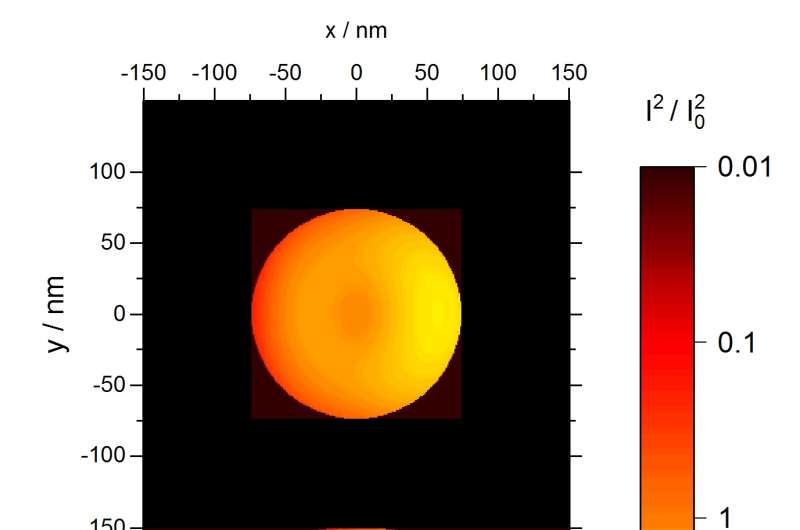Researchers devise a new way to examine the movement of low-energy electrons

The scientific community has known about the existence of electrons for over a hundred years, but there are important facets of their interaction with matter that remain shrouded in mystery. One particular area of interest is low-energy electrons or electrons that have kinetic energy levels of about 10 electronvolts (eV) or less. These electrons affect the functioning of insulators in electronic systems and are responsible for radiation damage in human and other biological tissue.
The classic method for studying how electrons interact with matter is by analyzing their scattering through thin layers of a known substance. This happens by directing a stream of electrons at the layer and analyzing the subsequent deviations in the electrons' trajectories.
"High-energy electrons primarily interact with the individual atoms in a substance and their scattering can be predicted by existing generalized models," said Ruth Signorell, a professor of physical chemistry at ETH Zürich, the Swiss Federal Institute of Technology. "In contrast, low-energy electrons interact with the whole molecular network, which includes the chemical bonds and vibrational motion of the atoms within the substance, and their scattering is currently too complex to predict with a model. With this in mind, we have been developing an alternative approach to measuring the movement of low-energy electrons."
Signorell and her colleagues explain their work this week in The Journal of Chemical Physics.
"One of our key ideas has been the development of a technique we call the 'aerosol overlayer method'. It involves generating aerosol droplets that consist of a solid core and a shell made of organic materials that mimic some of the polymers one would find in electronics. Working with these droplets in a vacuum, we can use laser light to induce the core to release electrons that travel through the shell. When they reach the surface and escape, we can measure different metrics such as their intensity," Signorell said.
"The aerosol overlayer method offers two major advantages," Signorell said. "First, it makes it easier to separate the issues of the transport of electrons through the shell versus their formation in the core. Second, droplets with a size comparable to the wavelength of the laser act as resonators for the laser light. This can be exploited to generate a wealth of additional information on the interaction of electrons with matter."
"The major challenge of this method is accurately determining the size of the core and shell of the aerosol particles. While it is still difficult to measure these quantities, the accuracy of the measurements affects the accuracy of the scattering information that is generated," Signorell said.
Going forward, Signorell and her colleagues are interested in broadening the scope of their work with the aerosol overlayer method.
"We want to apply the aerosol overlayer method to different materials of varied thicknesses. We are particularly interested in very thin shells and how their structural changes affect the escape of electrons from the droplet's surface. This is potentially very relevant for researchers investigating scientific questions related to the surfaces and interfaces of different substances," Signorell said. "With all of this work, we hope to fully analyze the broad range of experimental data that can be generated so that we can learn more about the movement of low-energy electrons."
More information: "Low-energy photoelectron transmission through aerosol layers," The Journal of Chemical Physics, DOI: 10.1063/1.4983995
Journal information: Journal of Chemical Physics
Provided by American Institute of Physics




















